.mobile{display:none;}
@media all and (max-width: 700px) {
.mobile{display:block;}
.desktop{display:none;}
}
According to the U.S. Environmental Protection Agency and the Centers for Disease Control and Prevention, there is no safe level of lead exposure. Lead is especially harmful to children. While paint, dust and soil are the most common sources of lead, drinking water can contribute 40 to 60 percent of an infant’s lead exposure. People concerned about lead in their drinking water have a number of options:
Determine if your water service line is made of lead
What is a service line?
It is the pipe that connects the water main below the street to the plumbing inside the house. In homes built before 1986, it could be made of lead.
Where to look for the line
There are four common configurations where the line enters the home. The entry point is usually in the basement or crawlspace.
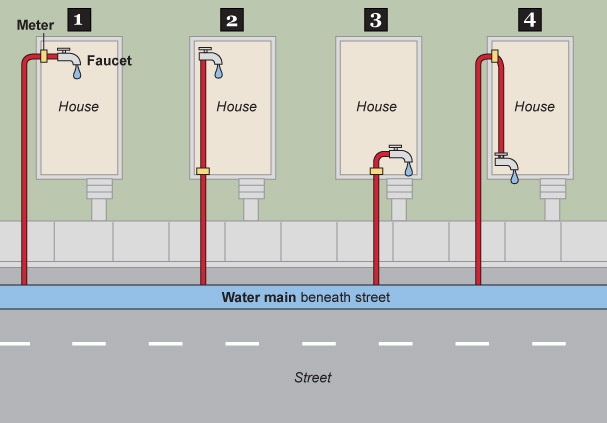
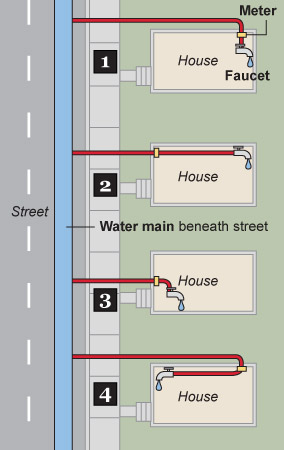
- Enters the back of the house where the tap is also located.
- Enters near the front of the house and travels to the back of the house.
- Enters the front of the house where the tap is also located.
- Enters the back of the house then travels to the front.
Three areas where lead may exist along the service line

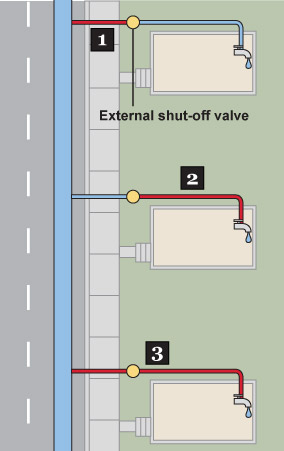
- Portion that travels from the water main to the external shut-off valve somewhere outside the house.
- From the external shut-off valve to the house plumbing.
- The entire service line from the water main to the house plumbing.
How to identify a lead service line
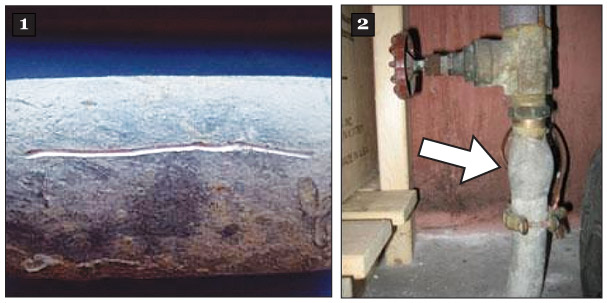
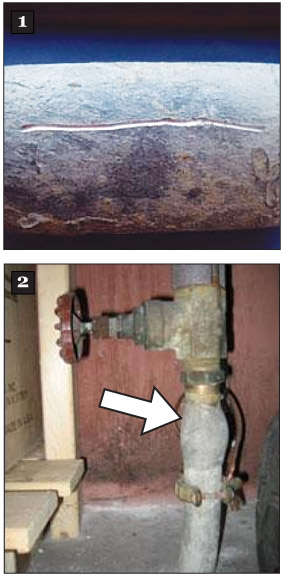
- A lead service line generally is dull gray in color and the metal is very soft. If you take a key and carefully scratch the surface of the pipe, the area will turn a bright silver color if the pipe is lead.
- Check where the service line is connected to the plumbing. If it’s lead, there will be a bulb shape where it was soldered at the end. There will also be a compression fitting or other connector made of galvanized iron, brass or bronze.
Actions you can take
- Have your water tested: Chicago residents can request a free water testing kit. Call 311 or go to www.chicagowaterquality.org for information.
- Be aware of work that can disturb the service line: Construction, water main replacement or service line repair can loosen up lead, contaminating the water flowing into the house.
- Run water before use: Especially important if the home’s water has not been used for several hours. The time varies based on the length of the lead service line. Five minutes will considerably reduce the amount of lead.
- Use only cold water for drinking, cooking and preparing baby formula.
- Purchase a water filter: Make sure it is certified to remove “total lead.”
- Replace the entire lead service line.
- Change faucet screens: Routinely clean screens at the tip of the faucet, where sediment and metals can collect. The components should unscrew easily.
For further reading go to this American Water Works Association report here
as well as this Environmental Protection Agency Chicago study here.
Sources: Environmental Protection Agency, American Water Works Association


![For nearly a decade, the “Black Teen Empowerment Summit” in Township High School District 214 has included students from across the six-school district who take part in what has become an annual tradition. This year, the summit was held April 19 at Rolling Meadows High School, and featured motivational speakers and inspirational activities with goals according to organizers, to promote belonging, personal appreciation, wellness and self awareness. Principal Megan Kelly said approximately 150 students attended from across the district. The Arlington Heights-based school district has nearly 12,000 students, with 49% of them of minority heritage – including 2% African-American. “I […] For nearly a decade, the “Black Teen Empowerment Summit” in Township High School District 214 has included students from across the six-school district who take part in what has become an annual tradition. This year, the summit was held April 19 at Rolling Meadows High School, and featured motivational speakers and inspirational activities with goals according to organizers, to promote belonging, personal appreciation, wellness and self awareness. Principal Megan Kelly said approximately 150 students attended from across the district. The Arlington Heights-based school district has nearly 12,000 students, with 49% of them of minority heritage – including 2% African-American. “I […]](https://www.chicagotribune.com/wp-content/uploads/2024/04/PPN-L-AHP-Black-Teen-Summit-12.jpg?w=526)

